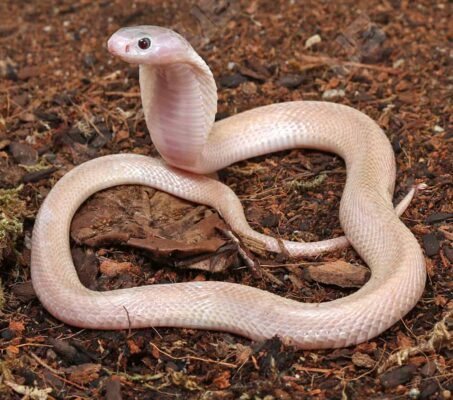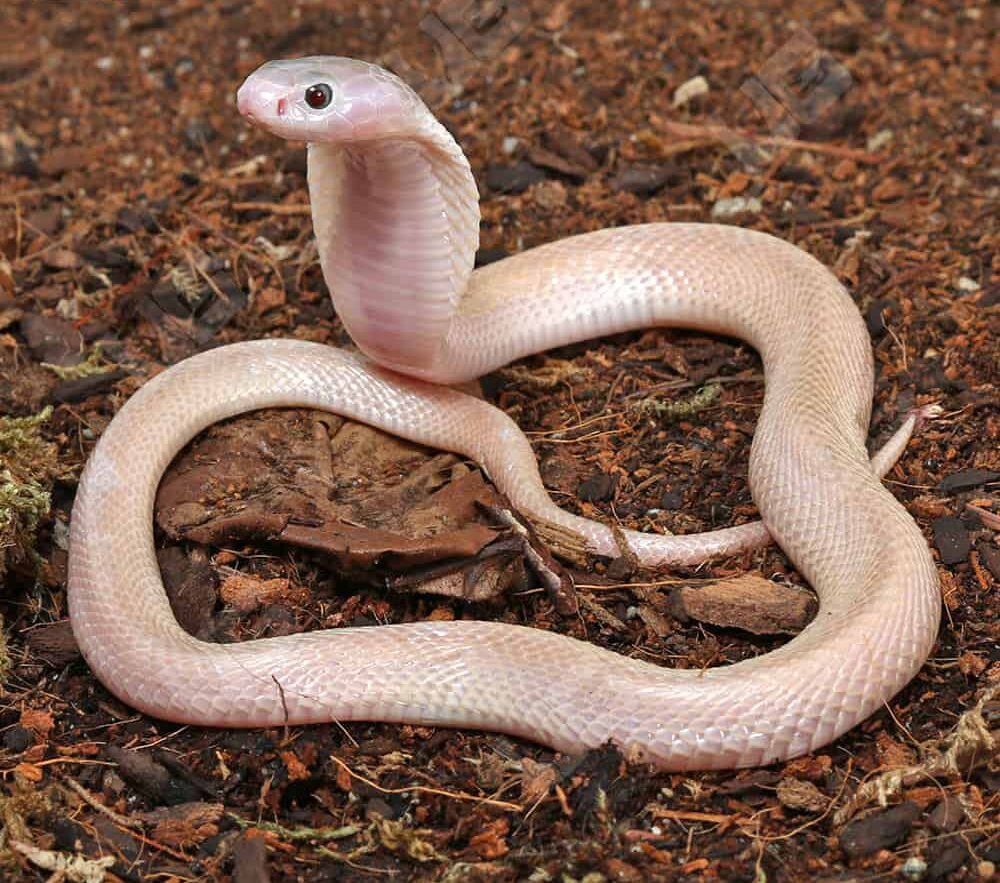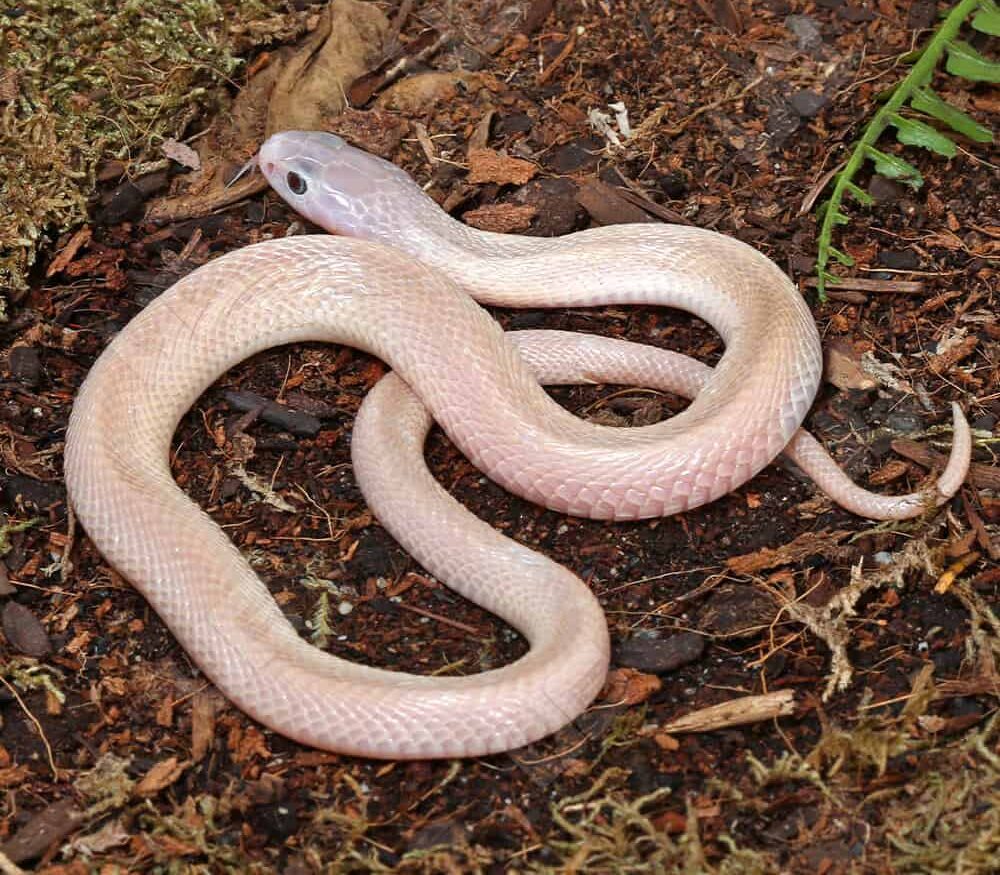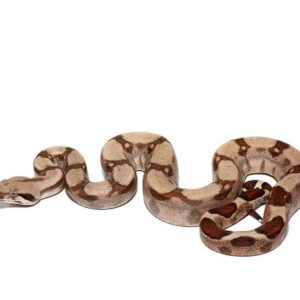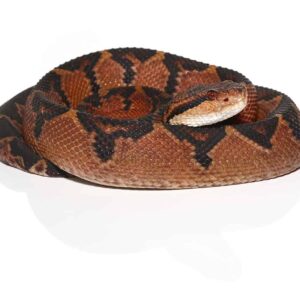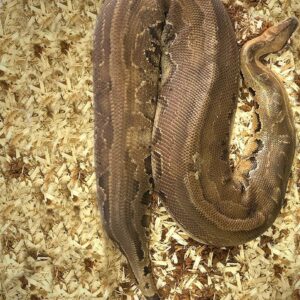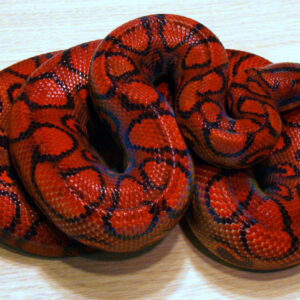Leucistic Indonesian Spitting Cobra For Sale
$1,199.99
WE HAVE A LEUCISTIC INDONESIAN SPITTING COBRA FOR SALE. HERE ARE SOME HIGHLIGHTS:
- Naja sputatrix
- Also Called The Javan Spitting Cobra
- Captive Bred
- Approximately 12 – 15 Inches In Length
- Can Grow Up To 4 – 6 Feet In Length
- Feeding On Fuzzy Mice Regularly
- *These Are Venomous. Please Know Your State Laws Before Inquiring As Some States Require Venomous Permits*
FUN FACTS!
- The Spitting Cobra Can Spray It’s Venom Up To 2.5 m.
- It Is A Very Quick, Extremely Agile, And Alert Snake
- They Prefer Grassland Habitats, It Allows Them To Blend In With Their Surroundings
- With Proper Care These Snakes Can Live 10 – 12+ Years In Captivity
Description
The Leucistic Indonesian Spitting Cobra, known scientifically as Naja sputatrix, is a fascinating and rare reptile. This species is commonly referred to by various names, such as the Javan spitting cobra or the Indonesian cobra, reflecting its geographical habitat predominantly in Indonesia. The term “leucistic” refers to a genetic condition characterized by a partial loss of pigmentation, resulting in a pale or white appearance but retaining normal eye color, distinguishing it from albinism, which involves a complete lack of melanin and often results in pink or red eyes.
Leucism in the Indonesian spitting cobra manifests as a strikingly unique appearance. Unlike their normally pigmented counterparts, which are typically dark brown or black, leucistic individuals exhibit a creamy white or pale yellow coloration. This rare phenotype not only makes them visually captivating but also subject to increased interest from herpetologists and reptile enthusiasts alike.
The key distinguishing characteristic of the Leucistic Indonesian Spitting Cobra, aside from its coloration, remains its ability to “spit” venom. This defensive behavior involves projecting venom from its fangs towards a perceived threat, with remarkable accuracy up to several feet. The venom primarily targets the eyes, causing intense pain and potential temporary blindness, which serves as an effective deterrent against predators.
Understanding leucism and its impact on the Indonesian spitting cobra provides valuable insights into genetic diversity and adaptation in reptiles. While leucistic individuals might face challenges in the wild due to their conspicuous appearance, which can make them more visible to predators, they remain a testament to nature’s genetic variability and the intricate evolutionary processes that shape the animal kingdom.
Habitat and Geographic Distribution
The Leucistic Indonesian Spitting Cobra (Naja sputatrix) is a fascinating reptile known for its unique coloration and intriguing behaviors. This species predominantly inhabits tropical rainforests and coastal regions, where the environment provides ample cover and abundant prey. The dense foliage and humid conditions of these rainforests offer the perfect sanctuary for this elusive cobra, allowing it to remain concealed from predators and humans alike.
In addition to tropical rainforests, the Leucistic Indonesian Spitting Cobra thrives in coastal areas. These regions provide a diverse array of habitats, from sandy dunes to mangrove forests, supporting the snake’s varied diet, which includes rodents, birds, and amphibians. The adaptability of this cobra to different environments is a testament to its evolutionary success, enabling it to flourish in both dense forests and open coastal zones.
Geographically, the Leucistic Indonesian Spitting Cobra is primarily found across the Indonesian archipelago. This extensive distribution includes major islands such as Sumatra, Java, and Borneo, where the cobra is a common sight in both natural and disturbed habitats. The snake’s presence in these regions underscores its adaptability and resilience in the face of habitat changes due to human activities.
Beyond Indonesia, there have been occasional sightings of the Leucistic Indonesian Spitting Cobra in neighboring Southeast Asian countries. However, these occurrences are relatively rare and are often attributed to the snake’s capability of traversing different habitats. The snake’s adaptability to various environmental conditions ensures its survival across a broad geographic range, reinforcing its status as a remarkable species within the Naja genus.
Understanding the habitat and geographic distribution of the Leucistic Indonesian Spitting Cobra is crucial for conservation efforts. Preserving the natural environments where these snakes thrive will help maintain their populations, ensuring that future generations can continue to study and appreciate these extraordinary reptiles.
Physical Characteristics and Behavior
The Leucistic Indonesian Spitting Cobra, a unique and fascinating reptile, stands out due to its distinct physical characteristics and intriguing behavior. This particular cobra displays a leucistic coloration, which is a condition characterized by reduced pigmentation. Unlike albinism, leucism allows some color to be retained, leading to the snake’s striking white or pale coloration, often accompanied by subtle hints of yellow or light brown. This pigmentation anomaly makes the Leucistic Indonesian Spitting Cobra a rare and visually captivating specimen among herpetologists and enthusiasts alike.
In terms of size, the Leucistic Indonesian Spitting Cobra typically measures between 1.2 to 1.5 meters in length when fully grown, although some individuals may reach lengths of up to 2 meters. Its body is relatively slender yet muscular, allowing it to move with both speed and agility. The head is broad and distinct from the neck, which can expand into a characteristic hood when the snake feels threatened or is displaying aggressive behavior. The eyes of this cobra are relatively large, equipped with round pupils that provide excellent vision, particularly in low light conditions.
Behaviorally, the Leucistic Indonesian Spitting Cobra is known for its defensive and hunting strategies. When confronted with potential threats, this cobra adopts a defensive posture by raising the front part of its body and expanding its hood. It is renowned for its ability to spit venom accurately over distances of up to 2 meters, aiming for the eyes of perceived threats to cause temporary blindness and intense pain. This spitting behavior is a highly effective deterrent against predators and is complemented by the cobra’s ability to deliver venomous bites when necessary.
In terms of hunting, the Leucistic Indonesian Spitting Cobra primarily preys on small mammals, birds, amphibians, and other reptiles. It employs a combination of ambush and active hunting techniques, relying on its keen sense of smell and vision to locate prey. Once a target is identified, the cobra strikes rapidly, injecting venom that immobilizes its prey. This venom not only serves to subdue the prey but also begins the process of digestion, breaking down tissues for easier consumption.
Daily, the Leucistic Indonesian Spitting Cobra exhibits a mix of diurnal and nocturnal activities, depending on environmental conditions and food availability. It prefers to inhabit regions with dense vegetation, where it can easily hide and ambush prey. The snake is both terrestrial and arboreal, capable of climbing trees and shrubs skillfully. This versatility in habitat preference further underscores the adaptability and resilience of the Leucistic Indonesian Spitting Cobra in its natural environment.
Diet and Feeding Habits
The Leucistic Indonesian Spitting Cobra exhibits a fascinating array of dietary preferences, primarily focusing on a carnivorous diet that includes a variety of prey. This species predominantly preys on small mammals, such as rodents, which are abundant in its natural habitat. Additionally, it is known to consume birds, amphibians, and other reptiles, showcasing its adaptability and opportunistic feeding behavior.
When hunting, the Leucistic Indonesian Spitting Cobra employs a combination of stealth and speed. It utilizes its keen sense of smell and acute vision to locate prey. Upon identifying a target, the cobra strikes with precision, injecting potent venom through its fangs. This venom not only immobilizes the prey but also initiates the digestive process by breaking down tissue, making it easier for the snake to consume its meal.
One of the most intriguing aspects of the Leucistic Indonesian Spitting Cobra’s feeding behavior is its ability to spit venom. While this behavior is primarily a defensive mechanism, it can also be used to subdue prey. By accurately spitting venom at the eyes of potential threats or prey, the cobra can cause temporary blindness, giving it an advantage in capturing or escaping.
After successfully subduing its prey, the cobra proceeds to swallow it whole, a common trait among snakes. The highly flexible jaws and expandable body allow the cobra to ingest prey much larger than its head. This ability is crucial for maximizing its caloric intake and ensuring survival, especially in environments where food may be sporadic.
Overall, the Leucistic Indonesian Spitting Cobra’s diet and feeding habits reflect its adaptability and efficiency as a predator. Its diverse diet, combined with specialized hunting strategies and unique venom-spitting capability, underscores its role as a formidable and versatile species within its ecosystem.
Reproduction and Lifespan
The reproductive cycle of the Leucistic Indonesian Spitting Cobra, scientifically known as Naja sputatrix, is a fascinating aspect of its biology. Mating behaviors in these cobras are typically observed during the wet season, which provides optimal conditions for the survival of their offspring. During this period, males engage in combat to gain access to receptive females, often exhibiting elaborate displays of dominance and aggression.
Once mating is successful, the female cobra proceeds to lay her eggs in a secluded, moist environment, ensuring they are well-protected from predators and environmental hazards. On average, a clutch consists of 10 to 20 eggs, which the female diligently guards until they hatch. The incubation period for Leucistic Indonesian Spitting Cobra eggs ranges between 60 to 80 days, depending on the ambient temperature and humidity levels.
Upon hatching, the young cobras are fully independent and equipped with venom, making them capable of fending for themselves from the outset. These hatchlings are miniature replicas of their parents, both in appearance and behavior, and they quickly adapt to their surroundings, learning to hunt and survive in the wild.
The lifespan of the Leucistic Indonesian Spitting Cobra varies between wild and captive environments. In the wild, these cobras typically live for 10 to 15 years, facing numerous challenges such as predation, habitat loss, and competition for resources. Conversely, in captivity, where they are provided with consistent food, medical care, and shelter, they can live up to 20 years or more. This extended lifespan in captivity is a testament to the resilience and adaptability of this species when provided with optimal care.
Venom and Its Effects
The venom of the Leucistic Indonesian Spitting Cobra is a complex cocktail of proteins and enzymes, specially designed to immobilize prey and deter potential threats. Comprised predominantly of neurotoxins and cytotoxins, the venom exerts a dual action. The neurotoxins interfere with the transmission of nerve impulses, leading to paralysis, while the cytotoxins cause cell destruction and tissue damage. This potent combination ensures that the prey is swiftly incapacitated, allowing the cobra to consume it without resistance.
The potency of the venom is remarkable. Even a small quantity can result in severe physiological effects, such as respiratory failure and systemic damage, due to its ability to disrupt the normal functioning of cells and tissues. In addition to its lethality to prey, the venom of the Leucistic Indonesian Spitting Cobra serves as a formidable defense mechanism against predators. The cobra can eject venom from its fangs with precision, targeting the eyes of its adversaries. This unique spitting mechanism is an evolutionary adaptation that deters potential threats without the need for physical confrontation.
When the venom contacts human skin, it can cause intense pain and localized necrosis. However, the most severe consequences occur if the venom enters the eyes. Immediate effects include excruciating pain, swelling, and temporary or permanent blindness if not promptly treated. The spitting cobra’s ability to accurately aim and deliver venom over a distance of several meters highlights the sophisticated nature of its defensive strategies.
Understanding the composition and effects of the venom not only underscores the biological intricacies of the Leucistic Indonesian Spitting Cobra but also emphasizes the importance of exercising caution when in proximity to these remarkable serpents. Knowledge of the venom’s characteristics and its impact on both prey and potential threats is crucial for both herpetologists and the general public in appreciating the dual nature of these fascinating creatures.
Conservation Status and Threats
The conservation status of the Leucistic Indonesian Spitting Cobra, a rare and fascinating reptile, is a matter of significant concern among wildlife experts. Currently, there is limited data specifically regarding the population trends of this unique leucistic variant. However, the general species it belongs to, the Naja sputatrix, is not listed as endangered according to the International Union for Conservation of Nature (IUCN). Nonetheless, the rarity of the leucistic form necessitates focused conservation efforts.
Primary threats to the Leucistic Indonesian Spitting Cobra include habitat destruction, illegal wildlife trade, and human-wildlife conflict. Deforestation for agriculture and urban development in Indonesia has led to the loss of natural habitats crucial for the survival of this species. Additionally, the illegal pet trade poses a significant threat, as the unique leucistic coloration makes these cobras highly desirable among exotic pet collectors. Human-wildlife conflict also exacerbates the situation, as these cobras are often killed when they come into contact with human settlements.
Conservation measures for the Leucistic Indonesian Spitting Cobra must be multi-faceted, involving habitat preservation, stricter regulations on wildlife trade, and community education initiatives. Protected areas and nature reserves play a crucial role in providing safe habitats. Enforcing laws against illegal trade and ensuring that these cobras are not captured or sold is imperative. Furthermore, educating local communities about the ecological importance of this species can help mitigate unnecessary killings and foster coexistence.
The importance of conservation efforts cannot be overstated. Protecting the Leucistic Indonesian Spitting Cobra not only preserves a unique genetic variant but also maintains the ecological balance within its habitat. Researchers and conservationists must continue to monitor the population, study its ecology, and advocate for effective protection strategies. Public awareness and involvement are key components in ensuring the survival of this remarkable reptile for future generations.
Fascinating Facts and Myths
The Leucistic Indonesian Spitting Cobra, often shrouded in mystery, has captivated scientists and snake enthusiasts alike. This remarkable reptile is known for its distinctive leucistic coloration, a genetic condition that results in reduced pigmentation, giving it a strikingly pale appearance. Unlike albinism, leucism does not affect the coloration of the eyes, which remain dark and piercing.
One intriguing fact about this cobra is its unique defensive mechanism. As its name suggests, the Indonesian Spitting Cobra can project venom from its fangs, aiming for the eyes of potential threats. This venom can cause severe irritation and even temporary blindness, making it an effective deterrent against predators. Contrary to popular belief, the venom is primarily intended for defense rather than hunting, as the cobra’s diet mainly consists of small mammals, birds, and other reptiles.
The myth that the Leucistic Indonesian Spitting Cobra is more aggressive due to its rare coloration is unfounded. In reality, its behavior is consistent with other spitting cobras, characterized by a preference for avoidance over confrontation. When threatened, this cobra will typically exhibit warning signs such as hooding and hissing before resorting to spitting venom or striking.
Another common misconception is that the leucistic variant of the Indonesian Spitting Cobra is a separate species. In fact, it is merely a color morph of the Naja sputatrix, the same species as the more common melanistic (dark-colored) individuals. This genetic variation adds to the snake’s mystique and rarity, but it does not delineate a distinct species.
The Leucistic Indonesian Spitting Cobra also plays a significant role in local folklore. Some cultures regard it as a symbol of purity and transformation due to its unusual appearance. Despite its fearsome reputation, this cobra is a vital part of the ecosystem, helping to control populations of pests and maintaining ecological balance.
Understanding the Leucistic Indonesian Spitting Cobra requires separating fact from fiction. By dispelling myths and appreciating the biological marvels of this snake, we can foster a deeper respect and curiosity for one of nature’s most fascinating creatures.
